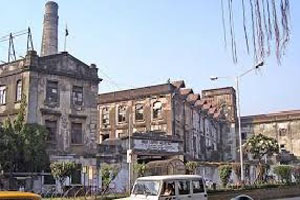
Mumbai all set to get its first textile museum
YarnsandFibers News Bureau 2018-01-03 17:00:00 – MumbaiMumbai, the Indian megalopolis by the Arabian Sea is all set to get its first textile museum to document, archive and represent Mumbai’s textile legacy.
The Brihanmumbai Municipal Corporation (BMA), Mumbai's governing civic body, will start with construction of textile museum in February of this year, more than eight years after the initial proposal was put forward.
The proposed structure includes a live, functioning mini-textile mill and a representation of the past chawl life - the city's former housing units for the working class, designed to provide cheap accommodation for the stream of migrants coming to the city since the early 1900s, many of them to work in the city's textile mills. In addition, landscaping is planned around a lake inside the compound as well as an amphitheatre and a musical fountain.
The whole complex will be spread over 16.3 acres (61,000 square metres) of land at the defunct United Mill compound in the Kalachowki neighborhood in the city's eastern suburbs, of which 14 acres will be used for construction and the rest for beautification.
Municipal commissioner Ajoy Mehta said that the planning committee is to make the museum interactive for the public, accessible which is enjoyed by all the citizens of the city.
Part of the United Mills compound are three ring and spinning structures, a chimney, a semi-automatic loom and a pond, all of which are protected by varying heritage status levels. Restoration work on some of the structures has already begun. All the heritage structures will be restored to its past glory.
Mehta said that he has asked the committee to restore the mills, the water body in the compound. The BMC has also appointed JJ School of Arts, Mumbai's premier art institute established in 1857, to prepare a vision document for the museum and to design its architecture.
The new museum will include fashion galleries that display traditional Indian textiles as well as the life and culture of the mill worker communities over the ages and education about India's and specifically Mumbai's once thriving textile industry.
The JJ School of Architecture, along with Fine Arts and Applied Arts, is working to give this museum to the citizens of Mumbai. Most museums tend to be elitist and are frequented only by the rich. They want this museum to be accessible to the public at large, said Rajiv Mishra, principal of Sir JJ College of Architecture, director at the State Directorate of Art, Maharashtra and member of the Mumbai Heritage Conservation Committee (MHCC). Mishra is currently leading a team of 15 experts from the school in planning the project.
New graduate students will get a chance to showcase their art works as the new museum will also have a dedicated exhibition space for them. The space will be allocated to new graduates, from painters to sculptors, who will be able to rent the space for six months to one year, showcase their art and also sell it. After a year, their place will be taken by new graduates. The space will not be given to boutique stores, said Mehta. A separate exhibition area is also planned.
Given the heritage structure of the mill site, the project had to clear hurdles when getting the necessary clearances, initially facing non-approval of the plan by the MHCC and lack of funding.
However, on 19th December 2017, the BMC held a pre-bid meeting for the first phase of the museum and the begin of construction is slated for February. The musical water fountain, as a technical project, is not included in the current tenders but an expression of interest will be invited during this month itself.
Market Intelligence
Ask for free sample Report

experience
Customer Base
dedicated team
Countries Served Worldwide









